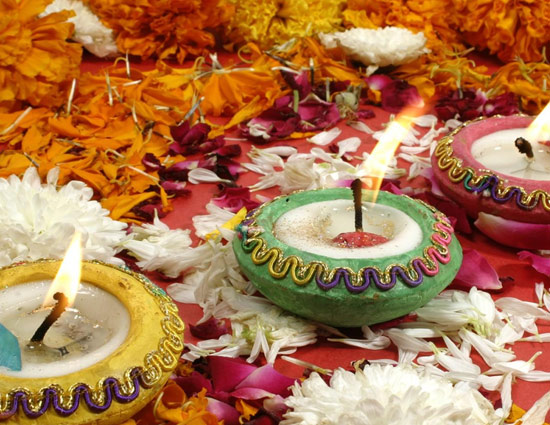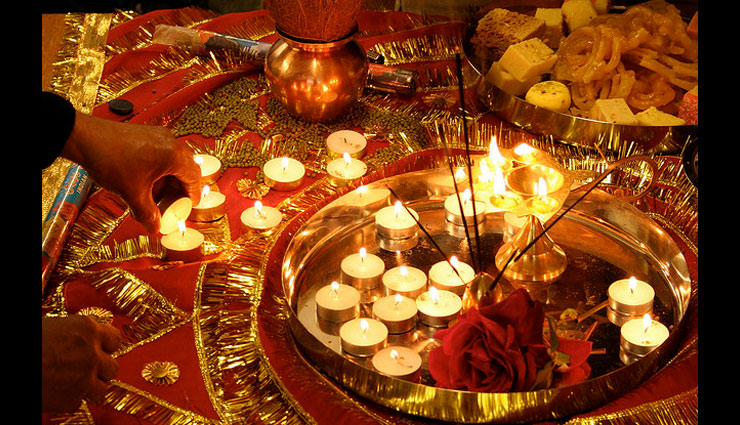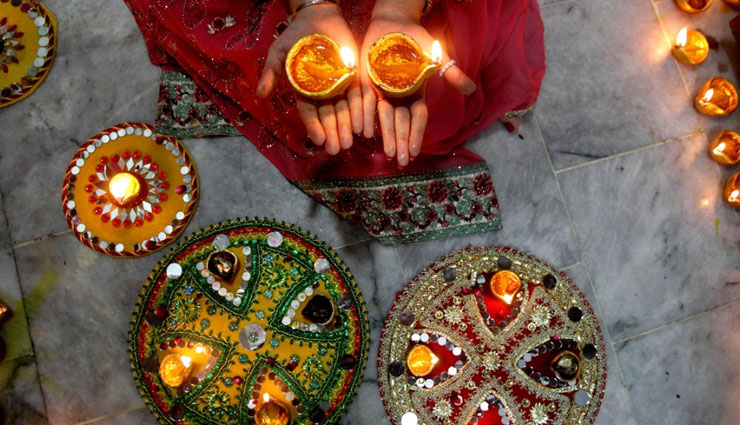Different Parts Of India Have Different Diwali Rituals, Know Here
By: Priyanka Maheshwari Wed, 11 Oct 2017 2:10:58

The Indian states are known for their unique idiosyncrasies presented through various traditional costumes, culture and lifestyle.
However, there are certain aspects that bind the country together, like the Diwali festival.
The Diwali festival has been celebrated for ages all over India and the culture of each Indian state has increased the sparkle of this festival of light.
From Kashmir to Kanyakumari, the festival takes the flavor of the region. Let’s explore the changing colours or rather the changing lights of Diwali festival in different regions of India.
# Bali Pratipada, North India
Bali Pratipada is observed on the third day of Diwali. This custom is celebrated throughout North India. According to Hindu mythology, this day marks the one-day return of the demon king, Bali. Lord Vishnu had reincarnated as his fifth avatar Vamana and banished Bali to 'patal loka' or the nether world. However, due to Bali's relentless devotion towards Vishnu, the Lord took pity on him and granted him one day to visit the world every year.

# Kauriya Kathi, Odisha
One of India's most culturally diverse state, Odisha, celebrates Diwali in a different way. During Kaunriya Kathi, the people of Odisha burn jute sticks to invite their ancestors who are said to descend from heaven on the day of Diwali. They believe that their ancestors live in the wide, open sky as the sun begins to move towards the Tropic of Capricorn.
# Vasu-Baras, Maharashtra
In the state of Maharashtra, Diwali festival becomes unique through the celebration of Vasu-Baras, a celebration of cows, which are considered holy by the Hindus. On this day women pray to cows with calves. Dhanteras is celebrated as Dhantrayodashi in Maharashtra and its southern states. Other than celebrating dhan or wealth on this day, it is also a celebration of the creation of Dhanvantri, the physician of Gods. The third day is ‘Diwalicha Padwa’ which celebrates the togetherness of husband and wife. The final day is called Bhau Bij which honours the brother sister bond.

# Diyari, Sindh
The community of Sindhis celebrate Diwali with a different name and somewhat different customs. They wash gold and silver coins in milk before worshipping the Goddess. After the Puja, they tap the coin against their teeth and chant the phrase - "Lakshmi aayi, danat vaai", which means Lakshmi arrived, poverty went away.
# Kali Puja, West Bengal
In West Bengal and eastern India, Diwali is celebrated to welcome the arrival of Maa Kali, avatar of Goddess Durga. Bengalis worship Goddess Kali for three days and celebrate the occasion by lighting up entire localities, bursting crackers, meeting kin and spending time with friends. In some parts, animals are also sacrificed to appease the deity. People observe fast and also worship Goddess Lakshmi, the deity of wealth.
# Deepavali, South India
In the South, Diwali is referred to as Deepavali and it begins with Dhanteras, known as Dantrayodashi, which is a modest beginning. The Southern Diwali actually starts in a big way on the day after, which is called Narakachaturdashi. It commemorates the killing of demon Narakasura by Lord Krishna and his wife Satyabhama. On Narakachaturdashi, people wake up before sunrise and bathe after an aroma infused oil massage. The women make rangolis on doorsteps and families light earthen diyas and burst firecrackers before dawn to mark the beginning of a new day after destruction of evil.
The next day is celebrated as Bali Pratipada or Bali Padyami, which honours the return of the virtuous demon King Bali to Earth. Vishnu had pushed the powerful demon king Bali into the nether worlds as his men had started terrorising people around because of increased power. As Bali was an ardent worshipper of Vishnu he received a boon to visit Earth every year during Diwali, which is the Bali Pratipada day.





